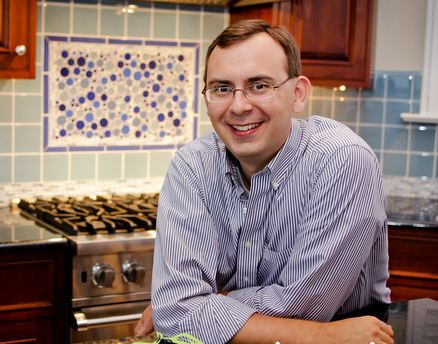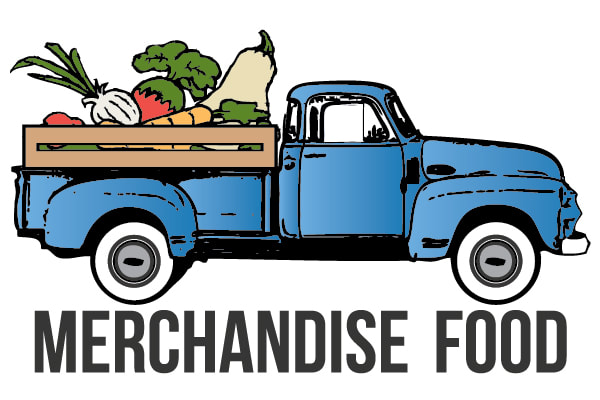Note from Merchandise Food: We've learned a lot from our friends at Zingerman's and ZingTrain over the years, and are thankful for this guest post to share a little more about their the books, work, and business beliefs that have fueled Zingerman's iconic reputation in the food business. Check it out:
A Lapsed Anarchist’s Approach to The Power of Beliefs in Business
by Ari Weinzweig
For as much as I’ve studied, taught, and written about both business and self-management over the years, up until recently I’d hardly paid a coffee cup’s worth of attention to the ways in which beliefs were impacting my world. In the course of Parts 1, 2, and 3of the books that make up the Zingerman’s Guide to Good Leading series, I’ve covered mission, vision, values, culture, Servant Leadership, self-management, creativity, anarchism, and a whole lot more. At ZingTrain our training business, we teach 9 different two day seminars on leadership and organizational development. And yet it’s only in the last few years that beliefs are finally getting their just due.
It turns out that I’d “discovered” a major player in the drama and dreams that make up my life, both personally and professionally. It was as if I’d been focusing on the play itself, the lines of the script, and the way actors sounded from the stage, but altogether ignoring the playwright who wrote the words and set the stage—literally and figuratively—for them to all be there doing what they do. What changed when I began to dial into the details and depths of what I believe, and to look into what others around me believed as well. It blew my mind. And it’s already having a big impact on our organization.
Although they don’t have their own line on the balance sheet, beliefs abound in the business world. But since few of us actually acknowledge them for what they are, or understand their import, they’re essentially invisible. Beliefs, though, are where almost every action, conscious and unconscious, begins. Whether we know it or not, our beliefs create—for better and for worse, for richer and for poorer—the complex reality in which we struggle to succeed every day.
When I talk about beliefs here I’m not referring to religion, sports or politics. While they’re commonly discussed beliefs, I’m interested for these purposes in less frequently talked about issues. I’m exploring what we believe about ourselves, about our products, about people in general and our coworkers in particular. What we believe about the marketplace, about competition, about organizational culture. And if you want to—as I have—carry this work into your personal life, then looking also at what we believe about our lives, our significant others, our kids, what success means, etc. Suffice it to say that literally everything about our organizations—and our lives—is based, I’ve now realized, on what we believe. As psychologist William James wrote: “Belief creates the actual fact.”
Here are two learnings that are at the core of this entire book:
a) In the course of researching for the book, I started to see beliefs in three broad categories. Negative beliefs, neutral beliefs and positive beliefs. Negative beliefs create negative outcomes. Neutral beliefs don’t do a whole lot. Positive beliefs create positive outcomes. You simply can’t get positive outcomes out of negative beliefs. You can generate a lot of short term energy out of negative beliefs. But in the long run the energy that emerges from negative beliefs will either just flame out and die, or keep us trapped in back and forth, no-win, cycles of pain and emotional violence. A great healthy sustainable organization, I started to realize, can only be built on positive beliefs.
b) We can change our beliefs!! That’s right, we can choose what we believe! Once we know we have beliefs, become mindful of what they are and understand how much impact they’re having on our lives, we may likely realize—as I did on my many subjects—that what we believe is creating a lot of the reality that we often don’t like. And that the most effective way to change our daily reality is to not to try to get others around us to change, but to look inward, to change what we believe. About ourselves, about the people we’re frustrated with, about the world.
Two other subjects covered in the book are also big contributors to organizational culture, health, engagement, and effectiveness. Hope and the spirit of generosity. Each is essential to building a healthy, caring, sustainable organization. And, of course, because we’re a food business, the book also includes a dozen or so recipes to use in your kitchen. A Tunisian couscous with octopus and harissa. Our challah bread from the Bakehouse. Chocolate-dipped-espresso cookies from the Bakehouse, and more!
Our beliefs, and their impact on our organizations, have not historically won big headlines. But in the six months or so that The Power of Beliefs in Business has been out it’s already having a huge impact on our own organization and on others who have been to our ZingTrain seminars or read the book themselves. Just this morning I got an email from a business leader on the East Coast who wrote: “I’m reading through Part 4 and I can’t tell you how it’s helped me focus and be a better leader as we are growing (which is not easy as you know). But being able to manage my actions/reactions has proven so beneficial for our team (and for me) whom all I know are working just as hard as I am!”
Learn more at www.zingtrain.com or www.zingermans.com
A Lapsed Anarchist’s Approach to The Power of Beliefs in Business
by Ari Weinzweig
For as much as I’ve studied, taught, and written about both business and self-management over the years, up until recently I’d hardly paid a coffee cup’s worth of attention to the ways in which beliefs were impacting my world. In the course of Parts 1, 2, and 3of the books that make up the Zingerman’s Guide to Good Leading series, I’ve covered mission, vision, values, culture, Servant Leadership, self-management, creativity, anarchism, and a whole lot more. At ZingTrain our training business, we teach 9 different two day seminars on leadership and organizational development. And yet it’s only in the last few years that beliefs are finally getting their just due.
It turns out that I’d “discovered” a major player in the drama and dreams that make up my life, both personally and professionally. It was as if I’d been focusing on the play itself, the lines of the script, and the way actors sounded from the stage, but altogether ignoring the playwright who wrote the words and set the stage—literally and figuratively—for them to all be there doing what they do. What changed when I began to dial into the details and depths of what I believe, and to look into what others around me believed as well. It blew my mind. And it’s already having a big impact on our organization.
Although they don’t have their own line on the balance sheet, beliefs abound in the business world. But since few of us actually acknowledge them for what they are, or understand their import, they’re essentially invisible. Beliefs, though, are where almost every action, conscious and unconscious, begins. Whether we know it or not, our beliefs create—for better and for worse, for richer and for poorer—the complex reality in which we struggle to succeed every day.
When I talk about beliefs here I’m not referring to religion, sports or politics. While they’re commonly discussed beliefs, I’m interested for these purposes in less frequently talked about issues. I’m exploring what we believe about ourselves, about our products, about people in general and our coworkers in particular. What we believe about the marketplace, about competition, about organizational culture. And if you want to—as I have—carry this work into your personal life, then looking also at what we believe about our lives, our significant others, our kids, what success means, etc. Suffice it to say that literally everything about our organizations—and our lives—is based, I’ve now realized, on what we believe. As psychologist William James wrote: “Belief creates the actual fact.”
Here are two learnings that are at the core of this entire book:
a) In the course of researching for the book, I started to see beliefs in three broad categories. Negative beliefs, neutral beliefs and positive beliefs. Negative beliefs create negative outcomes. Neutral beliefs don’t do a whole lot. Positive beliefs create positive outcomes. You simply can’t get positive outcomes out of negative beliefs. You can generate a lot of short term energy out of negative beliefs. But in the long run the energy that emerges from negative beliefs will either just flame out and die, or keep us trapped in back and forth, no-win, cycles of pain and emotional violence. A great healthy sustainable organization, I started to realize, can only be built on positive beliefs.
b) We can change our beliefs!! That’s right, we can choose what we believe! Once we know we have beliefs, become mindful of what they are and understand how much impact they’re having on our lives, we may likely realize—as I did on my many subjects—that what we believe is creating a lot of the reality that we often don’t like. And that the most effective way to change our daily reality is to not to try to get others around us to change, but to look inward, to change what we believe. About ourselves, about the people we’re frustrated with, about the world.
Two other subjects covered in the book are also big contributors to organizational culture, health, engagement, and effectiveness. Hope and the spirit of generosity. Each is essential to building a healthy, caring, sustainable organization. And, of course, because we’re a food business, the book also includes a dozen or so recipes to use in your kitchen. A Tunisian couscous with octopus and harissa. Our challah bread from the Bakehouse. Chocolate-dipped-espresso cookies from the Bakehouse, and more!
Our beliefs, and their impact on our organizations, have not historically won big headlines. But in the six months or so that The Power of Beliefs in Business has been out it’s already having a huge impact on our own organization and on others who have been to our ZingTrain seminars or read the book themselves. Just this morning I got an email from a business leader on the East Coast who wrote: “I’m reading through Part 4 and I can’t tell you how it’s helped me focus and be a better leader as we are growing (which is not easy as you know). But being able to manage my actions/reactions has proven so beneficial for our team (and for me) whom all I know are working just as hard as I am!”
Learn more at www.zingtrain.com or www.zingermans.com



 RSS Feed
RSS Feed
